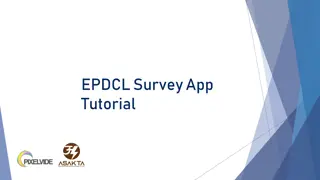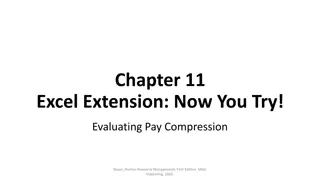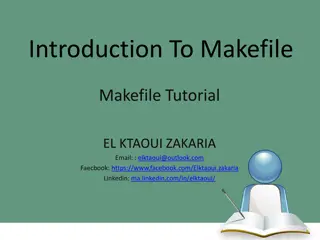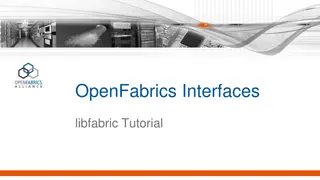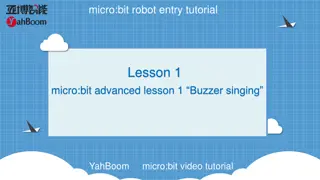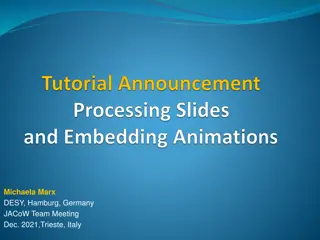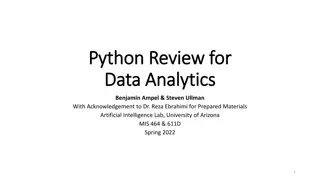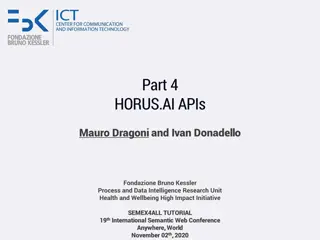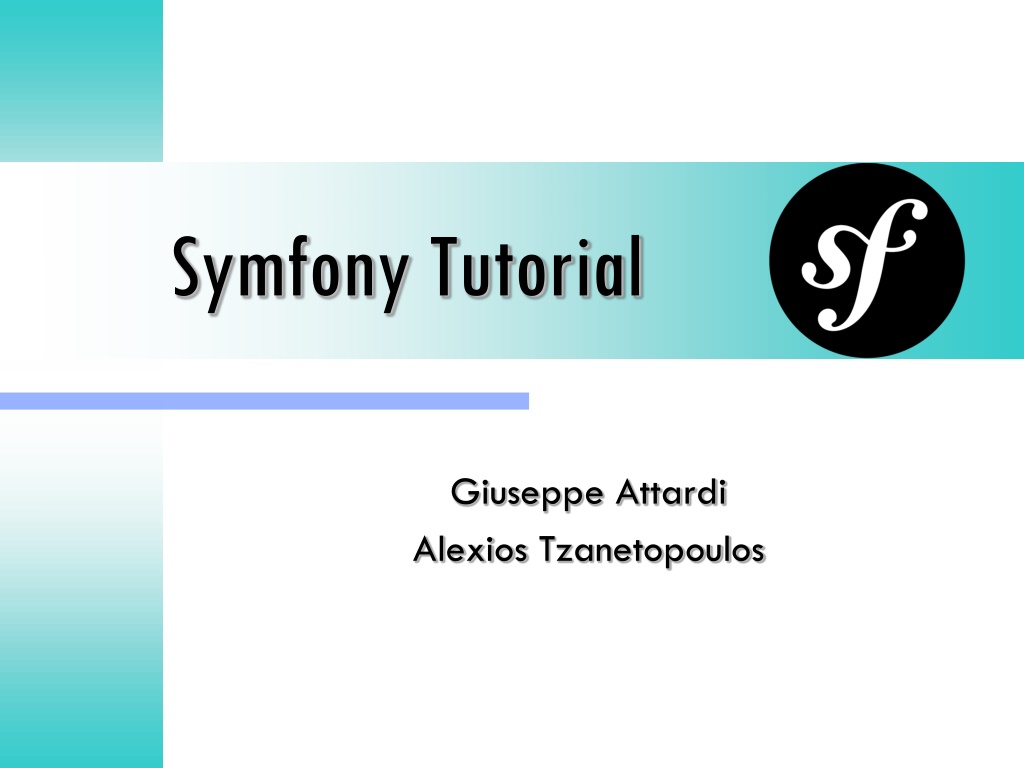
Symfony: PHP Web Application Framework Overview
Learn about Symfony, a PHP web application framework that provides object-oriented programming style, MVC architecture, ORM, automatic code generation, and a collection of components and libraries. Understand the differences between web frameworks and CMS, problems solved by Symfony, its performance advantages, Symfony bundles, and the concept of Model-View-Controller (MVC) architecture.
Download Presentation

Please find below an Image/Link to download the presentation.
The content on the website is provided AS IS for your information and personal use only. It may not be sold, licensed, or shared on other websites without obtaining consent from the author. If you encounter any issues during the download, it is possible that the publisher has removed the file from their server.
You are allowed to download the files provided on this website for personal or commercial use, subject to the condition that they are used lawfully. All files are the property of their respective owners.
The content on the website is provided AS IS for your information and personal use only. It may not be sold, licensed, or shared on other websites without obtaining consent from the author.
E N D
Presentation Transcript
SymfonyTutorial Giuseppe Attardi Alexios Tzanetopoulos
What is Symfony? PHP Web Application Framework that provides: Object Oriented programming style through ORM a MVC GUI Automatic code generation a collection of components and third-party libraries configuration and a "glue" library that ties all of these pieces together
Difference between Web Framework and CMS A web (application) framework is a lower level, generic toolkit for the development of web applications A web application exposes its data and services to users and machines via the http protocol A CMS is one type of such applications: a system to manage content shown in websites CMS are built on top of a WAF Drupal 7 has its own CMS, Drupal 8 uses Symfony
Problems Solved by Symfony Data persistence (via Doctrine) Security Forms Validation Templating Autoloading Logging Asset Management Routing File+Dir Traversing Translation Dependency Injection Image Manipulation Console Tasks Caching
Performance Symfony is about 3 times faster than Zend Framework 1.10, while taking up 2 times less memory
What is Model-View-Controller? MVC is a software architecture that separates the representation of information from the user s interaction with it the model represents the state of the application a view displays a representation of the model the controller mediates input, converting it to commands for the model or view
Interactions File:MVC-Process.svg
Component Interactions A controller sends commands: to the model to perform actions that may update the model state to the view to change the view s presentation of the model (e.g., by scrolling through a document). After a model update the model notifies its associated views and controllers, so that the views can produce updated output, and the controllers to change the available set of commands A view requests from the model information needed to generate an output representation
ORM (Object Relational Mapping) A technique for converting data in a Relational DB into Objects and vice versa The program manipulates objects which are persisted typically as a row in a table and read back from the table The attributes of an object correspond to columns A table is mapped to a repository object that represent the collection of objects Queries are submitted to a repository and return a list of objects or a cursor on such list
SymfonyBenefits A Framework simplifies development by providing structure and reusable modules Fast and less greedy Allows choosing which ORM to use Web Debug Toolbar Plentiful documentation and tutorials Drupal uses Symfony instead of its own framework
Cons Requires command line (troll) Not easy to learn
Flat PHP (blog posts page) <?php // index.php $link = mysql_connect('localhost', 'myuser', 'mypassword'); mysql_select_db('blog_db', $link); $result = mysql_query('SELECT id, title FROM post', $link); ?> <!DOCTYPE html> <html><head> <title>List of Posts</title> </head> <body> <h1>List of Posts</h1> <ul> <?php while ($row = mysql_fetch_assoc($result)): ?> <li><a href="/show.php?id=<?php echo $row['id'] ?>"> <?php echo $row['title'] ?> </a> </li> <?php endwhile; ?> </ul> </body> </html> <?php mysql_close($link); ?>
Result? No error-checking Poor organization Difficult to reuse code
1ststep -Installation Download from http://symfony.com/download (standard version) Follow instructions Test it @ http://localhost:8000/web/app_dev.php Go to folder > cd Symfony
Folder Structure Symfony app bin src vendor web bundles app.php app_dev.php config.php
2nd step -Create Application Bundle A Symfony3 project is made up of bundles Create bundle: > bin/console generate:bundle --namespace=PA16/PeopleBundle --format=annotation Generates code in directory src/PA16/PeopleBundle
Folder Structure Entity Controller PersonController.php Form PersonType.php Resources views Person Model Person.php PersonRepository.php Category.php Controller Views new.html.twig edit.html.twig index.html.twig
Folder Structure Resources public config css images js routing.yml services.xml validation.yml
3rd step - The Data Model Edit the parameters file ;app/config/parameters.yml parameters: database_driver: pdo_mysql database_host: database_name: database_user: database_password: password localhost symfony user Use doctrine in command line to auto-create the database in mySql: bin/console doctrine:database:create
3rd step - The Data Model Mapping to column class Person { /** @ORM\Column(name="id", type="integer") * @ORM\Id * @ORM\GeneratedValue(strategy="AUTO") */ private $id; /** @ORM\Column(name="Name", type="string", length=30) */ public $name; /** @ORM\Column(name="room", type="string", length=30) */ public $room; }
3rd step - The Data Model - Repository class PersonRepository extends EntityRepository { public function findAllOrderedByName() { return $this->getEntityManager() ->createQuery( 'SELECT p FROM Person p ORDER BY p.Name ASC ) ->getResult(); }
3rd Step Data Model - Query /** * Delete person with id $id. */ public function remove($id) { $this->createQueryBuilder('p') ->delete( PA16PeopleBundle:Person', 'p') ->where('p.id = :id') ->setParameter('id', $id) ->getQuery() ->execute(); }
3rd step - The Data Model - Associations /** * @ORM\ManyToOne(targetEntity="Category", inversedBy="members") * @ORM\JoinColumn(name="category_id", referencedColumnName="id") */ public $category; /** @ORM\ManyToOne(targetEntity="Department", inversedBy="members") * @ORM\JoinColumn(name="department_id", referencedColumnName="id") */ public $department;
3rd step - The Data Model - Associations class Department { /** * @ORM\OneToMany(targetEntity="Person", mappedBy="department") */ private $members;
3rd step - The Data Model Doctrine generates the accessor methods: > bin/console doctrine:generate:entities RosiPeopleBundle public function getName() { return $this->name; }
3rd step - The ORM We can ask Doctrine to create our database tables (or to update them to reflect our setup) with the command: > bin/console doctrine:schema:update --force Updating database schema... Database schema updated successfully! "7" queries were executed
4th step - Initial Data > mysql u root -p use symfony; INSERT into Category VALUES ("PO"); INSERT into Category VAUES ("PA"); INSERT into Person VALUES ("Albano", "2743"); INSERT into Person VALUES ("Attardi , "2744");
Request Processing Request Kernel Response Bootstrap Controller /blog/life /blog/friends /blog/about /blog/{title} showAction($title) BlogController: Rendered view
5th Step Generate CRUD > bin/console doctrine:generate:crud --entity= PA16PeopleBundle:Person --with-write Generates controller PersonController that provides methods: indexAction newAction showAction editAction deleteAction
Generated PersonController class PersonController extends Controller { /** @Route("/", name="dept_persona") * @Method("GET") * @Template() */ public function indexAction() { $em = $this->getDoctrine()->getManager(); $repo = $em->getRepository( RosiBundle:Person'); $entities = $repo->findAll(); return array('entities' => $entities); }
6th step - The Routing Associates URLs to controller methods Example: ; Rosi/PeopleBundle/Resource/config/routing.yml rosi_person_edit: pattern: /person/{id}/edit defaults: { _controller: RosiPeopleBundle:Person:edit } symfony/app.php/person/123/edit
Routing Annotation Can be provided in annotation to the method /** * Displays a form to edit an existing Person entity. * * @Route("/{id}/edit", name= rosi_person_edit") * @Method("GET") * @Template() */ public function editAction($id) { } Modifying app/config/routing.yml rosi_persona: "@RosiPeopleBundle/Controller/PersonController.php" type: annotation resource:
5th step - The Routing Edit the rosi_person_show route from the rosi.yml file: #src/RosiPeopleBundle/Resources/config/routing/rosi.yml rosi_person_show: pattern: /rosi/person/{id} defaults: { _controller: "RosiPeopleBundle:Person:show" }
6th step - Route Debugging See every route in your application: > bin/console router:debug Or a single route: > bin/console router:debug rosi_person_show
router:debug > bin/console router:debug [router] Current routes Name _wdt rosi_people ANY ANY ANY /people people_add_person ANY ANY ANY /person/add people_person_delete ANY ANY ANY /person/delete people_person_edit ANY ANY ANY /person/edit/{id} people_person_grid ANY ANY ANY /person/grid people_person_main ANY ANY ANY /person/main Method Scheme Host Path ANY ANY ANY /_wdt/{token}
So far? Barely written PHP code Working web module for the job model Ready to be tweaked and customized Remember, no PHP code also means no bugs!
7th step - The View Create the file layout.html.twig in the directory: src/Rosi/PeopleBundle/Resources/views/
7th Step Twig Templates Variables: {{ var }} {{ var | upper }} {{ var | raw }} {{ object.property }} {{ true ? yes : no }} Blocks {% if foo is bar %} ... {% else %} ... {% endif %}
Twig Templates Extends: {% extends "Bundle::layout.html.twig" %} Notice: there is no PHP code in Twig Full separation between logic and presentation
Twig Layouts A base layout defines blocks Each block can have a default value header {% block header %} <h1>Welcome!</h1> {% endblock %} side bar content
Twig Layouts A child layout extends the parent And overrides its blocks header {% block header %} {{ parent() }} back {% endblock %} side bar content
7th step - The View Tell Symfony to make them publicly available: > bin/console assets:install web --symlink Creates symlink: web/bundles/rosi -> src/Rosi/PeopleBundle/Resources/public
8th step - Testing 2 methods: Unit tests and Functional tests Unit tests verify that each method and function is working properly Functional tests verify that the resulting application behaves correctly as a whole



